Independence Day Email Tips for 2025
Independence Day of India: Historical Significance and Legacy
India commemorates its freedom on the 15th of August each year, celebrating the end of British rule in 1947 and honoring the nation's hard-won independence. This pivotal moment in Indian history represents the end of nearly two centuries of British dominance and the rise of self-governance.
Origin of Indian Independence
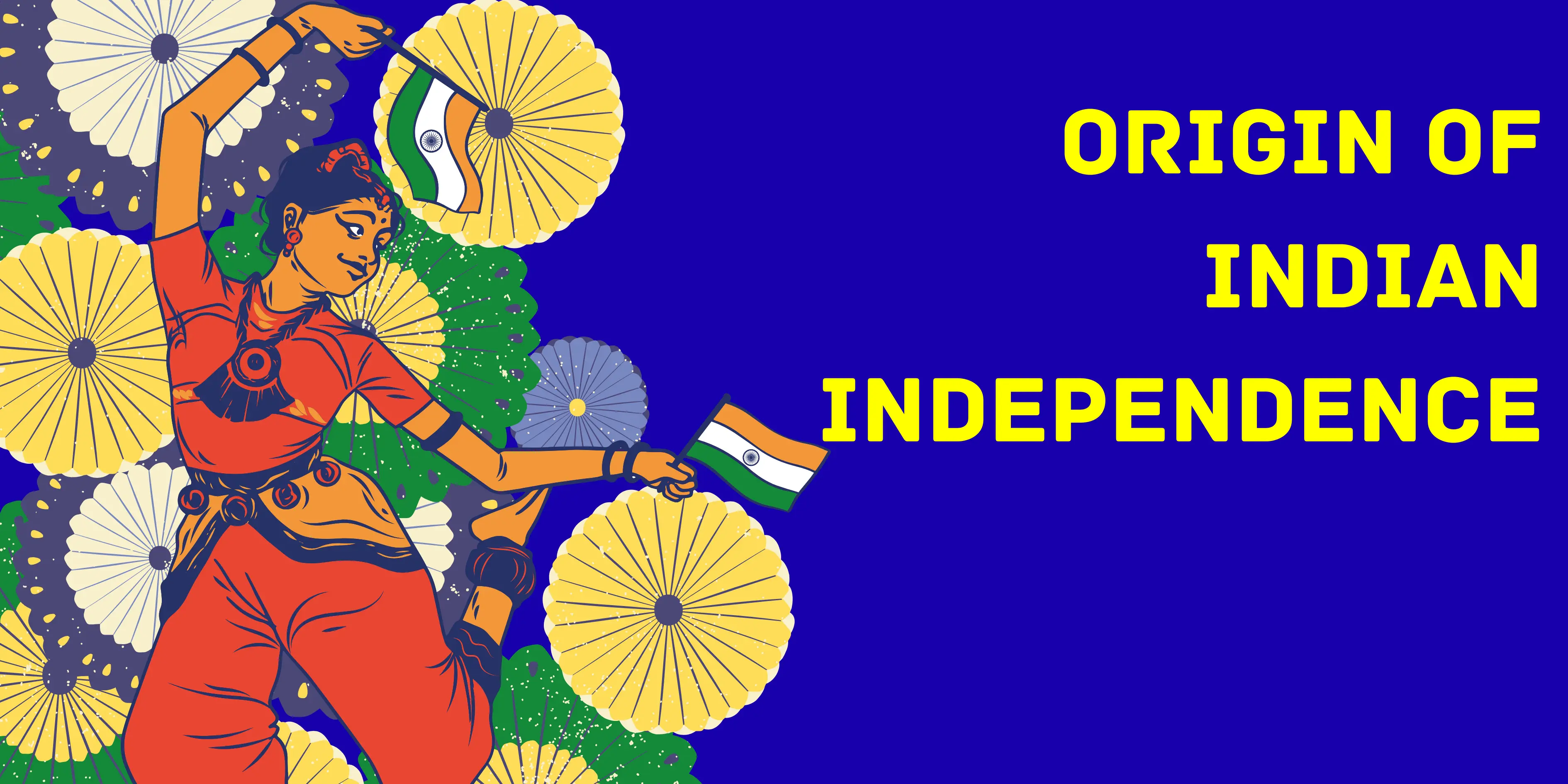 Artistic Independence Day illustration with dancer and Indian flag motifs.
Artistic Independence Day illustration with dancer and Indian flag motifs.
The legislation known as the Indian Independence Act of 1947 officially took effect on August 15, marking the shift of governing powers from the British legislature to the newly formed Constituent Assembly of India. The freedom was a result of many years of planned efforts, mostly through nonviolent movements and acts of civil resistance led by Mahatma Gandhi and the Indian National Congress.
This significant historical shift occurred during the painful separation of colonial India into two nations, India and Pakistan, triggering widespread chaos and mass displacement. Despite the trauma, India embraced its new status as an independent dominion with Jawaharlal Nehru hoisting the tricolor flag at Delhi's Red Fort, delivering his iconic "Tryst with Destiny" speech.
Evolution of Colonial Rule in India
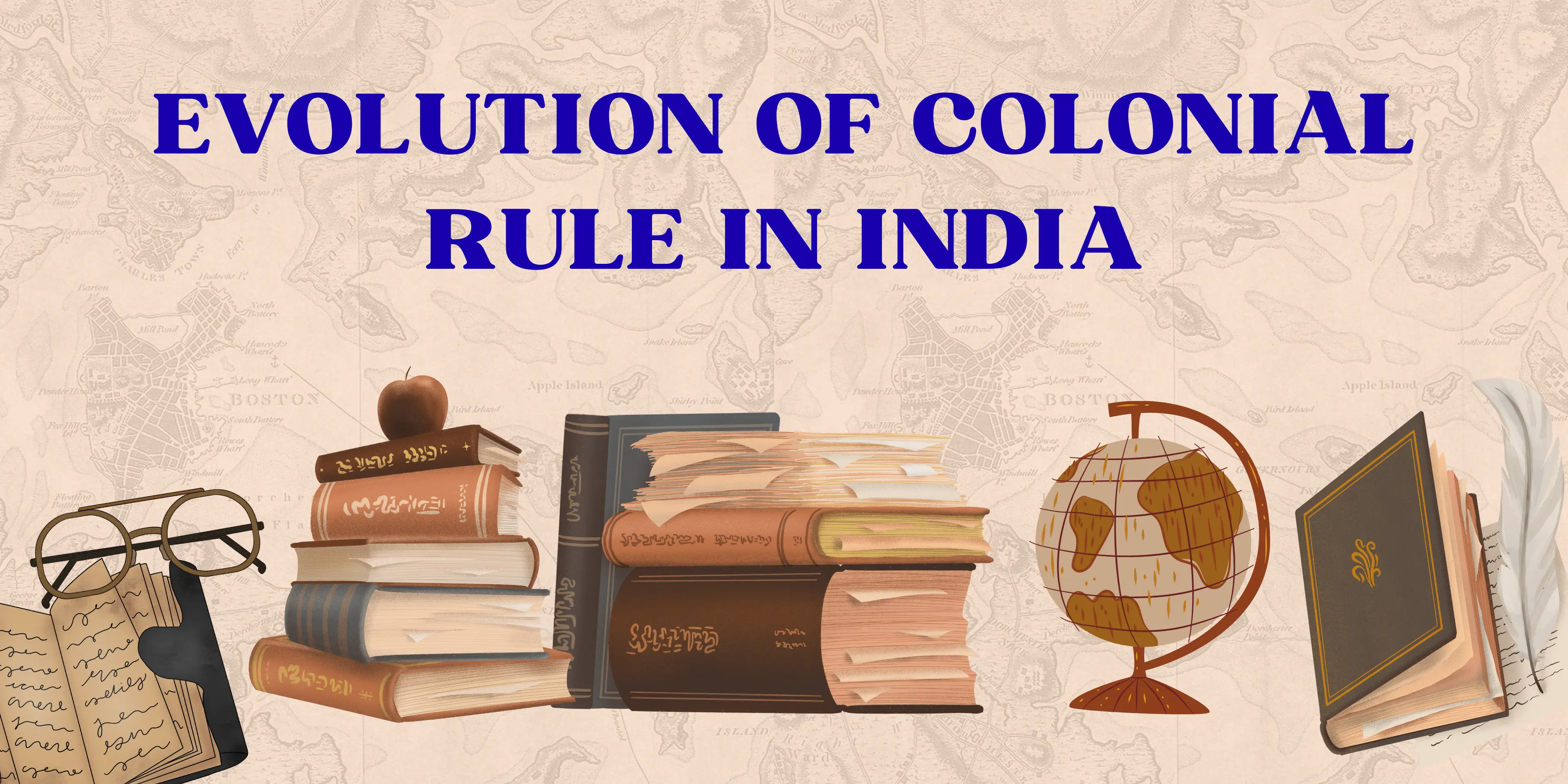 Colonial India history depicted through educational objects like books and globe.
Colonial India history depicted through educational objects like books and globe.
By the late 1600s, European traders, especially the British East India Company, had entrenched themselves in India. Leveraging superior military power, they took control over large regions, eventually becoming the subcontinent’s primary power.
The 1857 revolt, also known as the First War of Indian Independence, led to direct rule by the British Crown under the Government of India Act 1858. During this time, awareness around political issues began to grow, leading to the formation of the Indian National Congress in the year 1885.
Personalized savings for a patriotic celebration you’ll love.
Key Events Leading to Freedom
Post World War I, India witnessed various reform attempts like the Montagu–Chelmsford Reforms, but these were offset by regressive measures such as the Rowlatt Act. Growing unrest gave birth to nationwide non-violent protests, notably the Non-Cooperation Movement and Civil Disobedience Movement, encouraging widespread support for self-rule.
During the 1930s, slow political changes took place through constitutional adjustments, while the 1940s brought intense tensions, mainly involving disputes between the Indian National Congress and the All-India Muslim League. As World War II drained Britain's resources, it became evident that maintaining control over India was unsustainable.
The Final Push: Road to August 15, 1947
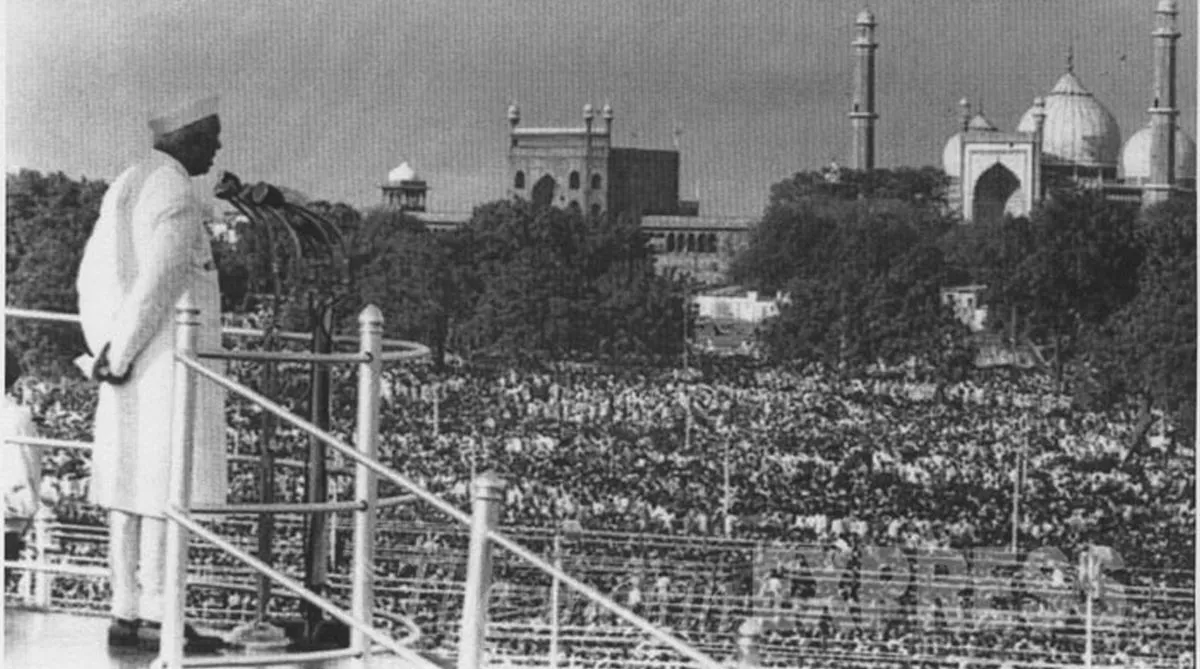 First Prime Minister Nehru’s voice echoes freedom at Red Fort, August 15, 1947. (Photo)
First Prime Minister Nehru’s voice echoes freedom at Red Fort, August 15, 1947. (Photo)
By 1946, post-war Britain faced financial hardship, global pressure, and growing domestic opposition to its imperial ventures. Recognizing the increasing unrest and administrative challenges in India, British Prime Minister Clement Attlee declared his intention to hand over full governing power to Indian leaders no later than June 1948.
To prevent escalating tensions between the Indian National Congress and the Muslim League, the final British Viceroy, Lord Mountbatten, advanced the official handover of power to 15 August 1947, a date that also signified the second anniversary of Japan’s surrender during the Second World War 2. On June 3, 1947, Britain consented to split the Indian subcontinent into two separate nations, India and Pakistan, through the Indian Independence Act, which later gained official approval on July 18, 1947. Power was officially handed over, signifying the conclusion of the British imperial administration.
Pre-Independence Observances and Purna Swaraj
Calls for complete independence were made as early as 1929 by leaders like Hasrat Mohani, leading to the Purna Swaraj (Complete Self-Rule) resolution. The Indian National Congress declared 26 January 1930 as complete self-rule Independence Day and urged citizens to engage in peaceful civil resistance.
This symbolic date was observed annually until 1946, with citizens taking pledges for freedom and engaging in community services, as envisioned by Mahatma Gandhi. The importance of 26 January was later solidified when the Constitution of India came into force on this date in 1950, now celebrated as Republic Day.
Independence Day Celebrations in Modern India
Independence Day is a national holiday marked by official ceremonies, cultural programs, and patriotic displays across the country. Each year, the Prime Minister hoists the national flag at the Red Fort and delivers a speech to the citizens of the nation, highlighting significant achievements and presenting future goals.
The full ceremony is aired live by Doordarshan, the national broadcaster of India, usually beginning with the soulful tunes of shehnai performed by the iconic maestro Ustad Bismillah Khan.
As India’s tricolor dawns on August 15th, brands see a fireworks opportunity to connect with customers. Independence Day is more than a holiday – it’s a chance to invoke national pride and drive sales through bulk email campaigns that feel personal and timely. Email marketing offers exceptional ROI (around 36× on average), making it a cost-effective channel for festive promotions. By blending patriotic themes with sharp tactics, marketers can rally inboxes with offers that feel both celebratory and urgent – like a fleet of paper kites lifting brand messages into the summer sky.
On August 15, India marks its freedom day, stirring patriotic emotions and driving festive shopping along with celebratory purchases across the country. From ecommerce flash sales to travel getaway packages, savvy marketers craft sector-specific Independence Day campaigns. Below we survey examples across industries, each illustrating how companies tailor their emails for this patriotic peak.
Patriotic Campaigns Across Industries
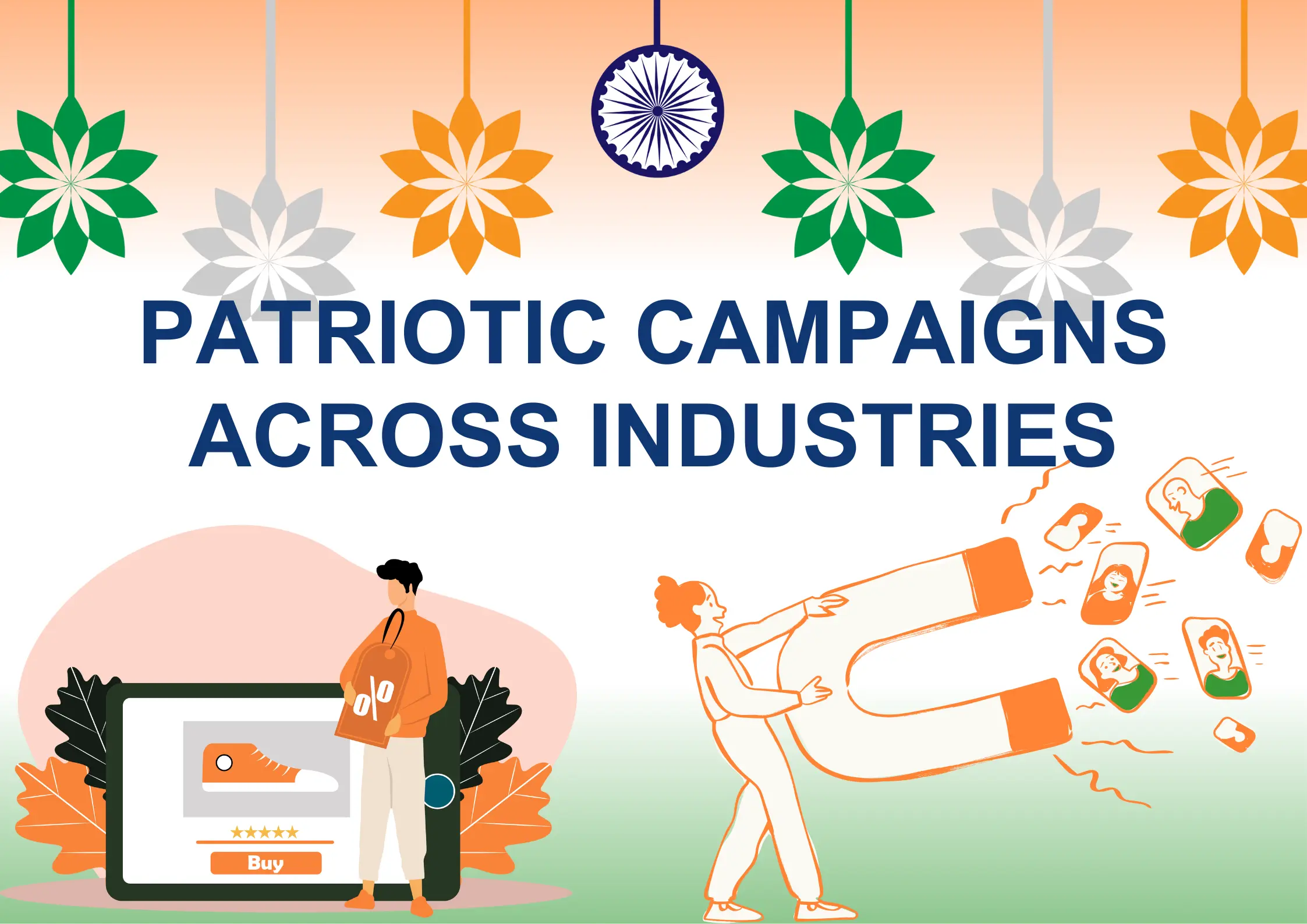 Patriotic marketing illustration using Indian tricolor symbols across diverse industries.
Patriotic marketing illustration using Indian tricolor symbols across diverse industries.
In recent years, brands across sectors like Consumer Goods & Retail, Financial Services, Technology & Digital, Food & Beverage, and Other Industries - including names like Godrej Industries, JSW Paints, Brands like Parle-G have embraced patriotically inspired campaigns by celebrating unity, showcasing cultural richness, appreciating the country's progress, and encouraging the use of domestically produced items. These campaigns aim to connect with consumers’ emotions, often using national symbols and highlighting social issues that resonate with the spirit of independence and national pride.
E-commerce (Electronics, Fashion, Home):
Online marketplaces frequently brand August deals with the spirit of freedom. For example, Flipkart’s yearly Independence Bonanza kicks off in early August and runs for only four days. By keeping the sale period short, Flipkart builds a sense of urgency, prompting shoppers to act fast before the “Freedom Sale” ends. Meanwhile, Amazon launches its Independence Bonanza with major discounts on electronics and fashionable clothing, drawing buyers with limited-time offers. Such seasonal promos lead to compelling email subject lines like: "Independence Deals Live - Just 3 Days to Shop!"” that mix patriotism with a ticking clock. As one analyst notes, seasonal sales “only ran for 4 days, so people had limited time to purchase” - a classic scarcity tactic in email marketing. E-tailers often highlight “Made in India” products or exclusive bundles in these emails, appealing to patriotism and value at once.
Travel & Tourism:
The vacation window around Independence Day is perfect for travel sales. Leading hospitality chains such as the Indian Hotels Company Limited (IHCL), known for Taj Hotels, launched the celebrated “Dekho Apna Desh” initiative to encourage travelers to rediscover local destinations and boost domestic tourism. This campaign, timed with the 75th Independence anniversary, urged Indians to “see your own country” with special stay packages. Email newsletters from airlines, tour operators, and hotel chains can tap this spirit: for example, subject lines like “Explore India’s Heritage: Independence Day Travel Deals” or “Celebrate Freedom with a Weekend Getaway” convey adventure and relevance. Packages might include special itineraries, bonus miles, or family offers, with imagery of iconic destinations. By reminding recipients of their own nation’s beauty, travel emails ride the patriotic wave to boost open and click rates.
Fashion & Apparel:
Apparel brands usually introduce patriotic-inspired ranges and special discounts around Independence Day celebrations. Many fashion brands promote a Tricolor Collection (saffron-white-green attire) or “Freedom to Style” sales in mid-August. Brands like Myntra and Pantaloons launch special Independence Day promotions, offering big savings on ethnic wear, footwear, and children's clothing. Email subject lines might read “Dress in Freedom: Our Independence Day Fashion Fiesta” or “Wave the Flag: 50% off on Tribal Prints!”. Real-world brands sometimes theme even broader offerings: one clothing store advertised an End of Season and Independence Sale running into August. By pairing patriotic branding with clear savings, fashion emails stand out in crowded inboxes.
Jewellery:
Gold and diamond jewellers tie patriotic emotions to gifting. Kalyan Jewellers, as an example, launched a special Independence Day video tribute to salute the bravery of Indian defence personnel, along with a limited-time offer of a 25% concession on craftsmanship fees for gold ornaments. Such offers - advertised via email - turn a purchase into a celebration of national pride. A persuasive email might feature images of gold coins or traditional jewellery against a subtle tricolor motif. Subject lines could be “Honor Power and Grace: Freedom Day Special Gold Offers” or “Win a 2g Gold Reward: Freedom Day Lucky Draw Awaits”. Blending heartfelt brand stories, like the one shared by Kalyan, with clear, valuable offers has the power to spark interest and boost click-throughs and sales.
Beauty & Wellness:
Beauty e-tailers and salons join the campaign with limited-time sales. Nykaa, India’s leading beauty retailer, schedules a Freedom/Independence Day Sale (typically mid-August) offering up to 60% off makeup, skincare, and fragrances. Nykaa is hosting its Freedom Day offers between August 12 and 18 in 2025. Email promotions might showcase a “Freedom Kit” of curated products or discounts on Indian beauty brands. Subject lines such as “Freedom to Glow - Independence Day Beauty Sale” or “All Indian Brands: Independence Day Special” leverage local pride. Similarly, gyms or wellness spas might offer “Patriotic Pamper Deals”, all part of invoking the holiday in diverse offerings.
Monsoon & Seasonal Sales:
Because Independence Day falls in the rains, some retailers combine monsoon-clearance with patriotic themes. Clothing and home-appliance stores often run Monsoon Mega Sales in late July/August, overlapping with Independence Day. For instance, brands like Zara, H&M, Nykaa Fashion and Westside advertise monsoon deals during this period. An email campaign might highlight both the cooling relief of discounts and the fiery colors of freedom, e.g. Saffron Sale: Escape the Monsoon Heat with Flat 70% Off.
While not inherently Independence-themed, these campaigns ride the general festival of sales that includes Independence Day and Ganesh Chaturthi in August
Sample Independence Day email campaign themes by sector (campaign dates and offers from Indian retailers).
Industry |
Campaign/Offer Example |
Sample Subject Line |
| E‑commerce (Online retail) | Flipkart’s “Freedom Fiesta” (4-day mega shopping rush rolling out in early August) | “Freedom Sale Live: 4 Days of Unbeatable Deals!” |
| Travel & Tourism | Taj Hotels’ “Dekho Apna Desh” staycation packages | “Explore India This Independence Day – Special Stays!” |
| Fashion & Apparel | Myntra/Pantaloons Independence Day clearance (tribal prints, saffron-white-green collection) | “Dress in Freedom – Independence Day Fashion Fiesta” |
| Jewellery | Kalyan Jewellers 25% off making charges on gold | “Celebrate Strength & Savings: Indep. Day Gold Offer!” |
| Beauty & Cosmetics | Nykaa’s Liberty Bonanza (Aug 12–18, flat savings of up to 60%) | “Freedom to Glow – Independence Day Beauty Sale” |
| Monsoon Sale (Apparel/Home) | Widespread “Rainy Season Grand Offers” between August 1 and 15 (Zara, H&M, and more) | “Amber Deals: Enjoy Discounts of Up to 70% to Stay Cool This Season!” |
Best Four Independence Email Template For All Size Business
01.
Subject: [First Name], your Freedom Flash Sale ends in 3 hours!
Preheader: Last chance for up to 70% off sitewide.
Body:
Hi [First Name],
Don’t miss out — freedom deals disappear at midnight:
-
Up to 70% off on all categories
-
Extra ₹300 off on prepaid orders
[Shop Flash Sale Now]
02.
Subject: [Last Name], celebrate with exclusive Independence Day bundles
Preheader: Curated deals just for you, only today!
Body:
Hi [First Name] [Last Name],
We picked these special bundles for your celebration:
-
Buy 2, get 1 free on select items
-
Free gift wrapping with every order
[View My Bundles]
03.
Subject: [First Name], freedom calls — grab your ₹750 instant discount
Preheader: Use code AZADI750 before it expires tonight.
Body:
Hello [First Name],
Celebrate with savings:
-
₹750 off on orders above ₹3,000
-
Free shipping included
[Apply My Discount]
04.
Subject: [Last Name], countdown to freedom: 24 hours left to save!
Preheader: Your last chance for Independence Day deals.
Body:
Hi [First Name] [Last Name],
The clock is ticking:
-
Up to 60% off sitewide
-
Bonus freebies on select brands
[Shop Before It’s Gone]
Get Instant Access to 40+ Fresh Template Ideas - Absolutely Free!
Crafting an Effective Independence Day Email
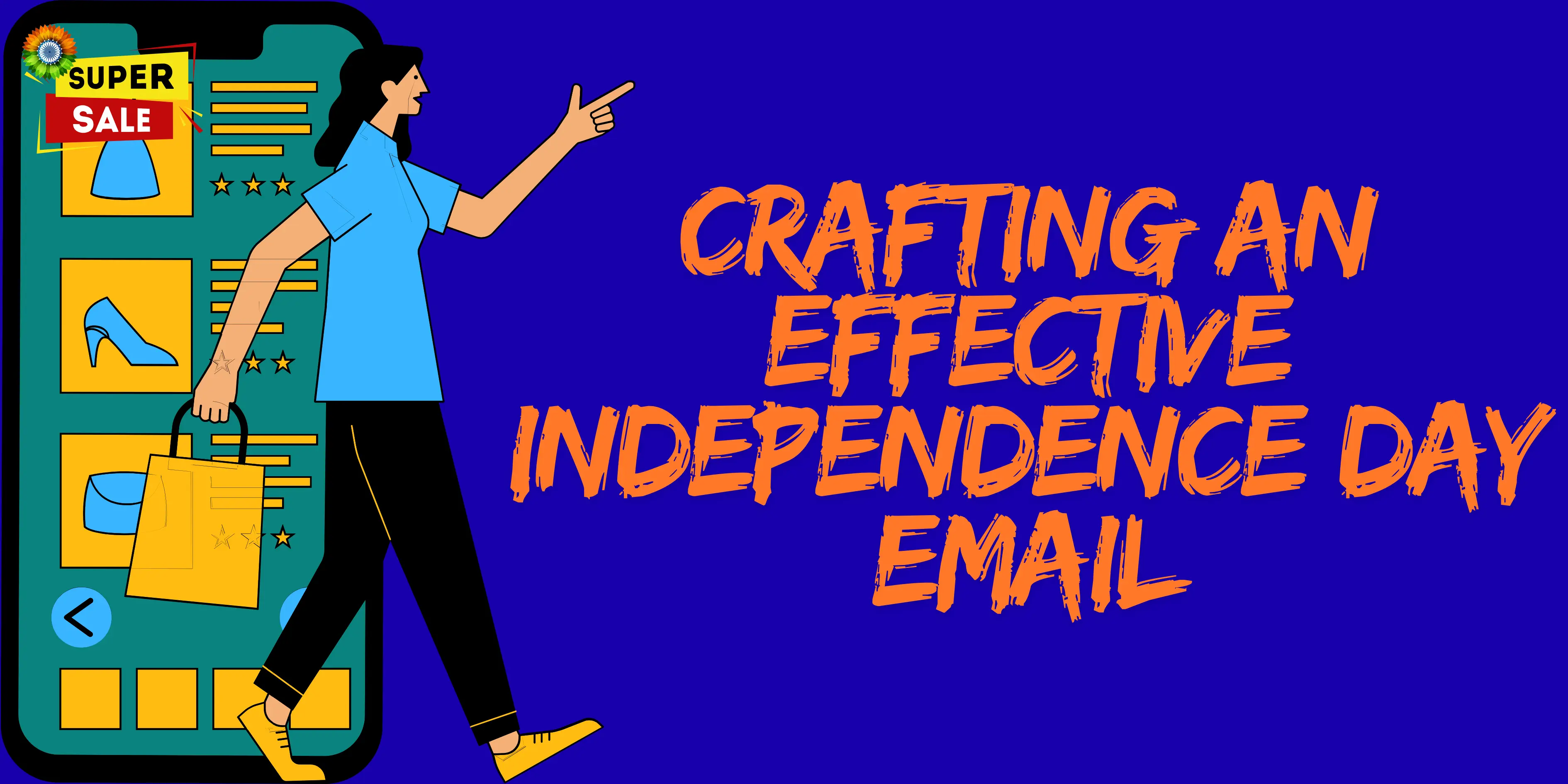 Independence Day email marketing illustration showing shopper and super sale.
Independence Day email marketing illustration showing shopper and super sale.
This Independence Day, craft an email with an attention-grabbing, engaging, and patriotic subject line that’s both concise and relevant to your audience. Begin with a personalized, brief and engaging greeting and introduction, followed by a body that highlights key themes, shares special offers/promotions, showcases your community involvement, and ends with a clear call to action. Add meaningful visuals with patriotic imagery, and close with gratitude, warm wishes, and a final company-specific message to inspire your readers.
Whether your brand is selling sarees or smartphones, certain email marketing tactics can make Independence Day campaigns resonate. Here are key best practices, with examples:
Segment Your Audience:
Avoid one-size-fits-all blasts. Divide customers by past behavior or demographics. For example, send travel deals to users who booked vacations before, and fashion offers to lifestyle shoppers. As per market insights, around 90% of professionals in email promotions believe that using audience-based grouping significantly enhances results. A segmented list lets you tailor subject lines and content: perhaps “[Name], special travel deals inside for Independence Day” versus “Patriotic Picks for Home: 50% Off Furniture”.
Personalize Content:
Personalization goes beyond merging a first name. Reference past purchases or location (e.g., “As a proud [City] resident…”). India’s audience responds to emails that feel relevant: one survey found 65% of marketers use personalized subject lines and over 80% say personalization improves open rates. Use dynamic content blocks: show only men’s wear deals to male subscribers, for instance.
Patriotic Theme & Storytelling:
Weave the spirit of freedom into copy and design. Blend shades of tangerine, cream, and deep green with elements like the country’s emblematic flag or renowned heritage landmarks. But be authentic: focus on meaningful messaging. For instance, Kalyan Jewellers’ Independence ad celebrated “unwavering spirit” and gender equality in the armed forces. Use email campaigns to share a meaningful message, ike marking Independence Day with a tribute or highlighting a patriotic effort. Authenticity drives engagement.
Urgent, Emotional Subject Lines:
With thousands of promotional emails landing daily, subject lines must cut through. Independence Day emails often invoke urgency or pride. Examples drawn from successful campaigns include “All Things Indian On Sale!” or “Hurry! Independence Day Savings End Soon!”. You can personalize urgency: “[BrandName] Independence Sale: 2 Days Left!” or spark emotion: “Salute Freedom with Every Purchase”. Keep subjects under ~50–60 characters (mobile-friendly) and avoid spammy words. Testing different approaches (patriotic vs. savings-focused) can reveal what resonates.
Clear Call-to-Action (CTA):
Help your viewers understand the specific next move they should make. Button text like “Shop the Freedom Sale” or “Book Your Independence Day Package” ties the patriotic theme to action. Place call-to-action prompts near the beginning and include them again later if the message is lengthy. Stick to a single clear call-to-action in each email to prevent mixed signals. Highlight it with a contrasting color (green buttons on a white background echo the flag colors).
Mobile Optimization:
Over half of Indians check email on phones Ensure your design is responsive, images load fast, and buttons are thumb-friendly. Given customers often browse deals on mobiles during holidays, emails with poor mobile design are easily skipped.
Timing & Frequency:
Plan a email sequence. Start with a teaser or “coming soon” a week ahead, follow up with the main offer email 2–3 days before Independence Day, then a last-chance reminder on Aug 14. Avoid spamming; 2–3 timely emails usually suffice. According to marketers, emails see highest opens shortly after sending, so schedule them at times your audience is active (often late morning or early evening in India).
Measure & Adapt:
Use analytics to track opens, clicks, and conversions for each email. Look for trends: which subject line got the best open rate? Which segment clicked most? These insights can refine next year’s campaigns. Make sure to follow laws by adding opt-out options and clearly stating who you are. Positive metrics (click-through, purchases) signal a successful campaign; if not, analyze for lessons learned.
Here’s a handpicked collection of subject line ideas for Independence Day emails to spark creativity. These blends of patriotism and urgency have proven effective in festive promotions:
“Celebrate Your Freedom - Exclusive Independence Day Offers!”
- “All Things Indian On Sale - Up to 50% off”
- “Hurry! Independence Day Savings End Soon!”
- “Freedom to Choose: Limited-Time Flash Sale!”
- “Stand Proud, Shop Proud: Independence Day Specials”
- “15 Days of Independence: Deals Today and Every Day”
These examples combine emotional appeal with action cues. For instance, “Freedom to Choose” implies empowerment, while “Hurry!” taps into fear of missing out. Tailor lines to your brand voice - a fun apparel brand might say “Wave the Tricolor in Style - 20% Off!”, whereas a premium tech company could use “Achieve Independence from High Prices - Gadgets on Sale”. Even employee-facing emails can get festive: “Happy Independence Day! Enjoy your special day off!” for internal newsletters.
Conclusion
India’s Freedom Day offers a strong opportunity to run high-impact mass email campaigns. By aligning offers with national sentiment - whether it’s “Made in India” pride, travel aspirations, or the simple joy of freedom - brands can make promotions feel timely and relevant. The key is to balance patriotism with clear value: customers should feel excited, not pandered to.Apply audience targeting and customized content to share the suitable note with every recipient, and count on time-sensitive triggers and eye-catching graphics to grab attention.
When executed thoughtfully, Independence Day email campaigns can become the crescendo of your summer marketing symphony - a brief but intense period of engagement that propels sales and brand affinity. As one digital marketing guide advises, “celebrating freedom is not only about showing patriotism, it is also about resonating with your customers’ sentiments”. Harness that resonance with smart email strategy, and watch your metrics soar higher than a sky lantern on 15th August night.
FAQs
Q1: How early should we start an Independence Day email campaign?
Most brands begin teaser emails about 7–10 days before August 15, with the main promotion sent around Aug 10–12. A final reminder on Aug 14 can capture late deciders. Starting too early risks fatigue, while too late may miss shoppers. Plan a schedule (teaser, launch, reminder) and stick to a couple of emails per subscriber so you stay top of mind without spamming.
Q2: What elements create an impactful subject line for an Independence Day campaign?
Patriotic words and urgency work well. Include phrases like “Freedom”, “Celebrate”, or “Independence” alongside clear benefits (“50% Off”, “Free Shipping”). For example: “Celebrate Independence – 3 Days of Deals!” or “All Things Indian On Sale!”. Concise phrases under 60 characters that suggest deals or limited access often lift open rates. Personalize when possible: “Aapki Azadi, Aapke Liye Special Deals” (Urdu/Hindi touches) can also engage local audiences.
Q3: How can we personalize Independence Day emails effectively?
Use data you already have. In case you’re aware of the client’s given name, try mentioning it (e.g. “[Name], Independence Day Offers Await!”). Segment lists by past purchases or interests: send a list of Red-White-Green clothing to fashion shoppers, or travel packages to past vacation bookers. You can also reference previous orders: “Based on your last purchase, we thought you’d love…”. Behavioral triggers (like cart abandonment with an Independence Day reminder) yield high engagement. Remember, personalization isn’t just a name – it’s tailoring content so each reader feels the message was written for them.
Q4: What should we avoid in Independence Day email campaigns?
Avoid clichés and overused phrases that sound insincere. Don’t bombard customers with too many emails or overly salesy language. Also, respect the holiday’s gravitas: steer clear of jokes or trivializing patriotism. In the rush of sales, maintain authenticity – if your brand isn’t Indian-made, don’t falsely claim it. Finally, ensure compliance (like easy opt-outs and honoring unsubscribe requests) to maintain trust, especially during high-volume campaigns.
Each Independence Day campaign is a chance to reaffirm values and customer connections. With creativity, planning, and respect for the occasion, your bulk email strategy can both honor the nation and your business goals.
Tags: Independence Day Sales India, Festival Season Email Marketing, Monsoon Marketing Campaigns, Jewellery Campaigns August, Republic Day Vs Independence Day, Flipkart Freedom Sale, Freedom Day Marketing Ideas, Independence Day History Explained, Online Shopping, Retail Offers, Ecommerce Sales.


![Independence Day email template example with subject line '[Last Name], your Freedom Fashion deal expires tonight,' featuring a 50% discount offer, cashback, and free scarf promotion. Includes call-to-action button 'CLICK HERE.](../../../../asset/blogimg/Email_Template_Idea.webp)